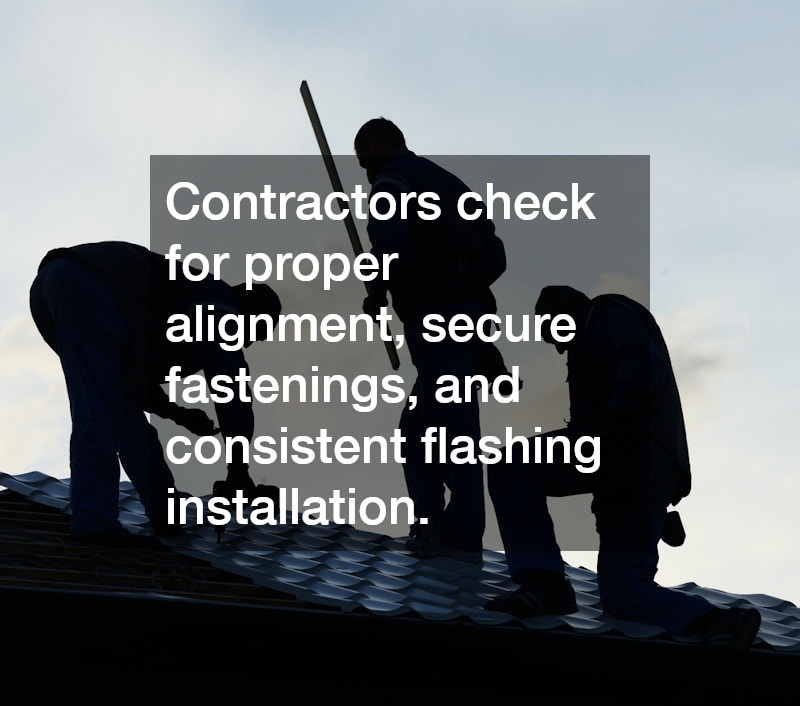Slate Roof Installation What to Expect and How to Prepare
Installing a slate roof is one of the most durable and visually striking upgrades you can make to your home. Known for its longevity, fire resistance, and classic appearance, slate is a premium roofing material that requires expert handling and thorough planning. Whether you are replacing an old system or choosing slate for a new construction project, understanding what to expect helps ensure a smooth and successful installation.
From initial assessments to final inspections, homeowners benefit greatly from knowing each stage of the process and how to prepare for it.
Understanding the Installation Timeline
A slate installation requires more time and precision than most other roofing materials. Before the project begins, contractors will thoroughly inspect the home to evaluate its structural capacity. Slate is heavier than asphalt shingles or metal roofing, so the framing must be strong enough to hold the additional weight. If reinforcement is needed, contractors will outline what modifications are required to keep the roof secure.
Once the planning phase is complete, the removal of any existing roofing materials begins. This step must be done carefully to avoid damaging the underlying decking. After removal, the surface is cleaned, repaired if necessary, and prepared for a fresh underlayment. A high-quality underlayment is essential for moisture protection and long-term performance.
From there, contractors lay out the slate tiles, sorting them by size and thickness to ensure even placement. Each tile must be installed by hand, and because slate is a natural stone, no two pieces are exactly alike. This individualized approach is part of what makes the material beautiful, but it also adds time to the project.
Preparing Your Home Before Installation
Proper preparation helps minimize disruptions and ensures the work can proceed safely and efficiently. Before contractors arrive, homeowners should clear driveways, move vehicles, and designate a staging area for materials and equipment. Slate tiles are delivered on large pallets, so ample space is needed for unloading and storage.
Inside the home, it’s wise to secure items on walls or shelves. Vibrations from removing old materials or installing new ones may cause lightweight items to shift. Covering attic belongings is also helpful because dust may fall through during the early stages of the project.
Landscaping protection is another important consideration. Contractors may set up tarps, plywood sheets, or temporary barriers to shield plants, flower beds, or outdoor furniture. Communicating about specific outdoor areas you want protected helps avoid accidental damage. Additionally, pets and children should be kept away from the work zone during construction for safety reasons.
What Homeowners Can Expect During the Process
During installation, contractors will work methodically to secure each tile in place. Skilled installers use specialized tools and techniques designed to handle natural stone, ensuring the tiles sit flush and remain watertight. Because the process is highly detailed, progress may appear slow at first, but precision is key to long-term durability.
You may see workers measuring and adjusting frequently as they move from one row to the next. This meticulous approach ensures that the finished roof has consistent spacing, balanced lines, and a clean aesthetic. Proper fastening methods are essential because slate can crack if nails are driven too tightly or placed incorrectly. Using the right fasteners, typically copper or stainless steel, helps prevent corrosion over time.
Weather can influence the timeline. Slate installation should be conducted in dry conditions, as moisture can interfere with adhesion, safety, and handling. If rain or strong winds occur, contractors may pause work to protect both the roof and the crew.
Homeowners should also expect routine cleanup during the project. Because slate is hand-cut, fragments and dust are common. A responsible crew will maintain a safe, neat site each day, minimizing hazards and keeping your property organized.
Throughout the process, communication is essential. Contractors should update you on progress, discuss any unexpected repairs, and explain how the installation is proceeding. If structural issues or decking concerns arise during tear-off, addressing them promptly ensures long-term stability for your slate roof.
Ensuring Longevity After Installation
Once the installation is complete, a final inspection is done to ensure craftsmanship meets quality standards. Contractors check for proper alignment, secure fastenings, and consistent flashing installation. Flashing is crucial because it protects vulnerable areas such as chimneys, valleys, and vents from water intrusion.
After the project is finished, homeowners should understand the basic care practices required to keep the roof in top condition. Fortunately, slate is known for its minimal maintenance needs. Occasional inspections—typically once a year—help identify loose tiles, damaged flashing, or debris accumulation. Because slate tiles are durable but can crack under heavy impact, professionals should always handle repairs rather than attempting DIY fixes.
Gutters should also be kept clean to ensure proper drainage. Standing water or ice dams can shorten the lifespan of the materials supporting your slate roof, even though the slate itself is extremely long-lasting.
Preparing for installation and knowing what to expect from the process makes adding a slate roof a smooth and rewarding experience. From initial structural assessments to final inspections, each stage is designed to ensure long-term performance and beauty. With proper preparation, open communication, and a qualified contractor, homeowners can achieve a roof that provides exceptional durability, energy efficiency, and timeless curb appeal. This investment not only enhances your home’s appearance but also delivers protection that can last for generations.



